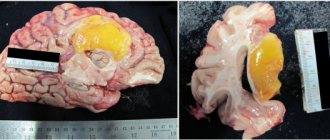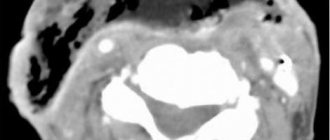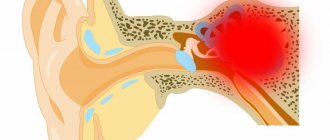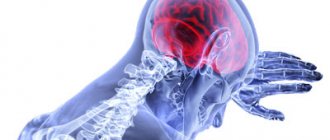There are simply no people in the world who do not have disturbing and extremely unpleasant thoughts for at least a few minutes. These fleeting anxieties do not interfere in any way at work or at home, and do not force you to change your lifestyle, behavior, or habits. Obsessive thoughts (obsessions) are something similar to anxious thoughts, but they are also fundamentally different. Obsessions are a subtype of anxious thoughts that take over the brain, but in the case of this disease we are talking about a long-term and involuntary appearance of anxiety. It is extremely difficult to cope with them on your own. And even with professional help, the patient will have to make every effort for a complete recovery.
Features of obsessive thoughts
Patients are aware of the illogicality of anxious thoughts, but only a few manage to cope with them on their own. Anxious thoughts do not in any way affect a person’s consciousness or cognitive functions. The patient realizes the absurdity of this disease. Despite all attempts to cope with frequent fears and anxieties, the situation is unlikely to improve, and the symptoms will become more and more disturbing. And this inaccessibility of the disease to human efforts often frightens patients.
Compulsive actions often accompany obsessive thoughts. They represent a certain behavioral stereotype, which, according to the patient, will eliminate anxiety or prevent it. How logical this move is is a moot point. From a medical point of view, this behavior of the patient may lead the doctor to think about the presence of obsessive-compulsive disorder - a mental abnormality.
Pathological anxiety and symptoms of depression (feelings of guilt, a sense of absurdity, apathy, depressed mood) also often accompany this disease.
It is a rare person who does not pay attention to the disease on a subconscious level. Much more often, either a passive or an active method of confronting obsessive thoughts is chosen. The passive method of “fighting” is much more common. The patient tries to avoid all situations that may become frightening for him. Avoidance behavior often turns the patient into a real homebody and socially passive person. In the case of an active method of counteracting obsessive thoughts, the patient prefers to go “shoulder to shoulder” with his illness. If it seems to him that an icicle from the roof might fall on him, he will deliberately walk as close as possible to the facade of the building, tempting fate.
Diagnosis
GAD is characterized by increased anxiety and worry (most days during the past six months) about a variety of events and activities, such as school or work. In addition, GAD is associated with restlessness, muscle tension, fatigue, problems concentrating, irritability and sleep disturbances.
DSM-5 criteria for diagnosing GAD
- Excessive anxiety and worry (anxious anticipation) about a variety of events and activities, such as school or work.
- The person has difficulty gaining control over anxiety
- Excessive anxiety and worry are associated with at least three of the following symptoms, affecting a person most days for at least six months: Restlessness or feeling on edge, fatigue, difficulty concentrating, irritability, muscle tension or sleep disturbances
Classification of obsessive thoughts
The obsessive thoughts that plague people are frightening in their diversity. Each person has his own unique set of anxieties and fears, which are quite problematic to classify. Of course, psychologists have been trying to do this for decades, but the success of this endeavor has been extremely doubtful. In modern medicine, the most popular classification is Jasper, who divided all obsessive thoughts into two large categories: figurative and abstract. The former lead to the affect of anxiety as a result of intense experiences. The second ones do not lead to fear at all.
The first group is represented by rather threatening thoughts with pronounced anxiety:
- Transferring the patient’s thinking to a new virtual reality;
- Perception of long-past events as if they were happening in reality;
- An endless desire to commit various forbidden acts;
- Fear of not doing something well enough;
- Complete uncertainty and constant doubts when performing any action.
The second group consists of safe and useless worries:
- The desire to share memories, reaching the point of an urgent need;
- Useless division of sentences into words, and words into syllables;
- The need for constant counting of objects (arithmomania);
- Empty verbosity (Rasoning).
Patients with obsessive thoughts are divided into several conventional types:
"Keepers" . These people blindly believe that any old thing can be useful, and that everything that reminds of the past should be preserved, even if it is absolutely useless now. Such patients prefer to keep everything, and the loss of such unnecessary things is akin to a disaster for them.
"Pedants" . Such patients are confident in the need for perfect order everywhere and in everything. Strict symmetry of things, a certain sequence of placement of objects, the absence of unnecessary things - all this is an urgent need for such patients.
"Blasphemous" . Such people are afraid of accidentally sinning, so they try to do everything flawlessly. Sometimes this desire leads to actions close to madness.
"Reinsurers" . They are characterized by constant checks and double-checks of everything that could be potentially dangerous: is the door closed, is the gas or iron turned off, and so on.
"Raccoon Raccoons" .
This type of patient is characterized by a paranoid love of cleanliness, washing, washing and cleaning. Sometimes patients spend 3-4 hours a day washing.
How dangerous are antidepressants for the human body?
Are antidepressants dangerous to your health? People are as afraid of these drugs as they are of antibiotics. There are many myths around these medications. How dangerous are antidepressants really? First of all, you should understand that no doctor will prescribe you a potent drug without indications for it.
Modern medicines have a rather gentle effect on the human body, bringing great benefits to patients and bringing them closer to recovery much faster. The drugs affect the production of necessary neurotransmitters and compensate for the lack of serotonin and endorphins. As a result, within a couple of weeks the patient begins to feel many times better than before the start of therapy.
However, the positive effect of the tablets does not occur immediately; over the course of several weeks, the human body adapts, which is why some side effects occur. They often cause patients to stop taking medications because they feel like their condition is only getting worse. However, you should be prepared for the fact that these are not magic pills that will help you get rid of a serious illness overnight. Most medications have a cumulative effect.
A competent specialist knows in what dosages a particular drug should be taken. Most often, the dose is increased gradually, as the body gets used to it, which is why at the beginning of taking it the expected effect will be absent. It is important for patients to stay in touch with their doctor to inform him of any changes. If your health condition worsens, tell your doctor. If you follow the recommendations, the medications will only bring benefits and a significant improvement in your well-being.
Causes of obsessive thoughts
Alas, there are no concrete facts that precisely confirm the reasons for the occurrence of obsessive thoughts. Today, two hypotheses are particularly popular in the medical community (biological factor and neuropsychiatric factor), which are based on factors that provoke anxious and obsessive thoughts.
Biological factor:
- Infectious effect of streptococci;
- Genetic mutations of the serotonin transporter;
- Deficiency of dopamine, serotonin, GABA and norepinephrine, malfunction of neurotransmitters;
- A peculiar operation of the nervous system caused by the structural features of the brain.
Psychoneurological factor:
- Exhaustion of the nervous system, excessive fatigue;
- Psychotraumatic cases:
- Anankasty personality traits;
- Type of nervous activity with labile inhibition and inert excitation;
- Children's complexes, problems of adolescence and growing up.
Treatment of obsessive thoughts
Several different techniques can be used to treat obsessive thoughts. As a rule, specialists do not resort to drug treatment: for most patients, professional cognitive-behavioral psychotherapy is sufficient.
Psychotherapeutic treatment
Cognitive behavioral therapy targets the source of intrusive thoughts—inappropriate thoughts and beliefs. At each session the patient is gradually restricted, and with each visit to the doctor the degree of restrictions increases. Ultimately, the situation is brought to the point of a complete ban on habitual actions on a subconscious level. As a result, anxiety is reduced.
The cognitive-behavioral method is based on focusing on experiences that the patient perceives as a catastrophe. The method is aimed at “reconfiguring” the brain, and the result of the sessions is a gradual weakening of the sense of responsibility, and at the same time an adequate response to thoughts and experiences that bother the patient is developed.
Group psychotherapy helps with obsessive thoughts. When a person spends time around people who have the same problem, he begins to become convinced of his inadequacy, unworthiness and abnormality. These sessions help patients gain self-confidence, increase self-esteem, and at the same time become more active and cope with obsessive disorder much faster.
Pharmacological treatment
Medicines are practically useless for treating obsessive thoughts. Drug therapy helps cope with symptoms, and complete recovery is impossible with pills alone. As a rule, several groups of drugs are prescribed:
- neuroleptics;
- tranquilizers;
- antidepressants.
At the initial stage, intense anxiety is treated with anxiolytic drugs (diazepam, etc.). Benzodiazepine tranquilizers have a targeted effect on the brain, namely its limbic system, which is responsible for emotional function. There is an opinion that such drugs allow one to cope with obsessive thoughts by influencing the neurons of the “punishment system”, which form negative feelings. Despite the effectiveness of the drug, the course of treatment should be short-term, since tranquilizers can cause dependence and addiction.
For obsessive thoughts, the drug of choice is venlafaxine, as well as other drugs based on selective norepinephrine and serotonin reuptake inhibitors. When a deficiency syndrome is added to the disease, drugs from the SNRI group, such as a combination of atomoxetine and sertaline, can be included in the course of drug therapy.
When antidepressants have shown their failure, and the disease has become chronic, therapy with antipsychotics, such as risperidone, is used. These drugs belong to the class of antipsychotics and reduce a person’s emotionality, but they are characterized by a direct relationship between the use of large doses, the development of depression and increased obsessive thoughts. For this reason, antipsychotics are not used to treat this disease in some countries, such as the United States.
In the CIS countries, in severe cases of OBD, it is customary to use zuclopenthixol and other long-acting drugs if the disease does not have depressive symptoms.
Maintenance pharmacological therapy
A meta-analysis showed that long-term use of SSRIs (6–12 months) was effective in preventing relapse (odds ratio for relapse = 0.20).
Relapse after 6-18 months of duloxetine, escitalopram, paroxetine and venlayaxin XR was observed in 10-20% of cases, compared with 40-56% in the control group. Continuing pregabalin and quetiapine XR also prevents relapse after 6-12 months.
Long-term RCTs have shown that escitalopram, paroxetine and venlafaxine XR help maintain benefit over six months.










